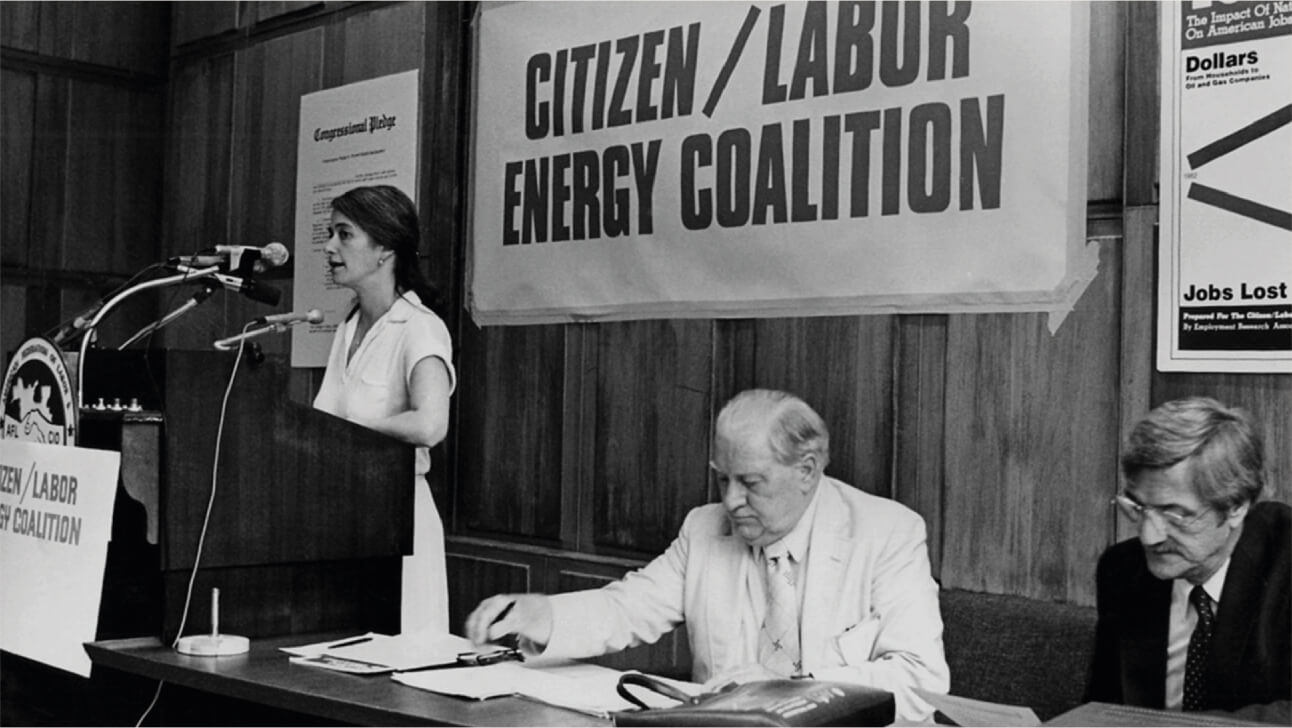People & Planet First
Most of us want the same things: a good life for ourselves and our children, a better future that we can look forward to, and to be treated fairly.
But right now, corporations are profiting from damaging our climate and dividing people based on race, background, or where we live, harming our communities–and hurting Black and brown, and indigenous people the most.

Freedom Summer
In high school, Heather Tobis (who later marries Paul Booth, a founder of Students for a Democratic Society and the Chicago Citizens Action Program) joins the Congress on Racial Equality (CORE) to protest racial discrimination. As an undergraduate at the University of Chicago, she travels to Mississippi to register Black voters and set up freedom schools and libraries with Mary Lou Hamer and other organizers for the Student Nonviolent Coordinating Committee (SNCC).


Expanded Housing Organizing
Gale and Shel, together with thousands of community leaders at OBA, Northwest Community Organization, and Our Lady of Angels founded the West Site Coalition to deal with redlining, blockbusting and panic peddling happening across neighborhoods.

The First Conference
368 community groups from 38 states sent 1,600 delegates to the First National Housing conference in Chicago. Senator Charles Percy, Mayor Richard J. Daley, and presidential candidate George McGovern all attend. Follow-up meeting in Baltimore forms the National People’s Action on Housing and Housing Training and Information Center. HTIC board votes to hire Cincotta as Executive Director, Trapp as Training Director, and Anne-Marie Douglas as secretary.
NPAH and the HTIC’s first national action in Washington, DC targets HUB Secretary George Romney.


Passing the Home Mortgage Disclosure Act (HMDA)
Senator William Proxmire (D-WI) holds committee hearings on S1281, HMDA. Cincotta testified before Representative St Germain’s sub-committee in favor of HMDA. Cincotta is the only Community person invited to testify on FHA abuses before the U.S. Senate’s Committee on Banking & Urban Affairs and U.S. House Committee on Banking Operations Sub-committee on Manpower & Housing. HMDA passes Senate 45 to 37, and a December 12th Joint committee resolves HMDA bill which passes the Senate again on December 15th and the House on December 18th. President Ford signed the HMDA on January 3, 1976. For good measure, Illinois passed the Fairness and Lending Bill making redlining illegal in the State of Illinois; legislation requires disclosure of savings and lending data and limits relocation of savings and loan associations.

Love Canal
The story of the Center for Health, Environment & Justice (CHEJ) starts with Lois Gibbs in Niagara Falls, New York. In 1978, Lois was struggling to raise a family that included two children suffering from a variety of rare illnesses. Nearly every family in the now-infamous Love Canal neighborhood was facing its own medical nightmare. When Lois discovered that her home and those of her neighbors sat beside 21,000 tons of toxic chemicals, she led her community in a three-year struggle to protect their families from the hazardous waste buried in their backyards. Lois and her neighbors developed strategies and methods to educate and organize the community, assess the impacts of toxic wastes on their health, and challenge corporate and government policies on the dumping of hazardous materials. 833 Love Canal households were relocated but 20,000 tons of waste are still buried there.

Citizen Action Founded
In December 1979, organizers from five state organizations came together with Midwest Academy, C/LEC, and the Cooperative Alliance to found Citizen Action. Citizen Action organizers and leaders came out of the civil rights, women’s movements, student movements, consumer rights, community organizing, the anti-war movement, and feminist movements of the previous two decades. A national strategy was needed to advance a progressive populist economic agenda that could unite majorities and address white backlash to civil rights. The focus of the founding state coalitions was multiracial working-class organizing on majoritarian economic issues. The founding groups are Massachusetts Fair Share, Illinois Public Action Council, Ohio Public Interest Campaign, Oregon Fair Share, and Indiana Citizen Action Coalition. Others soon joined as well: New Hampshire People’s Alliance, Pennsylvania Public Interest Campaign, and Minnesota COACT, eventually reaching 36 statewide groups at its peak.








